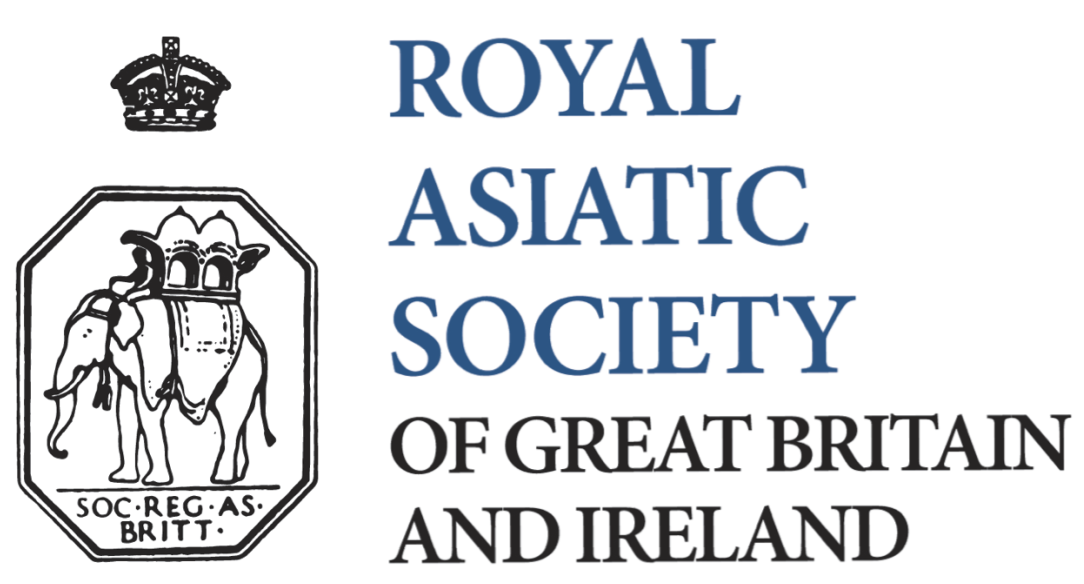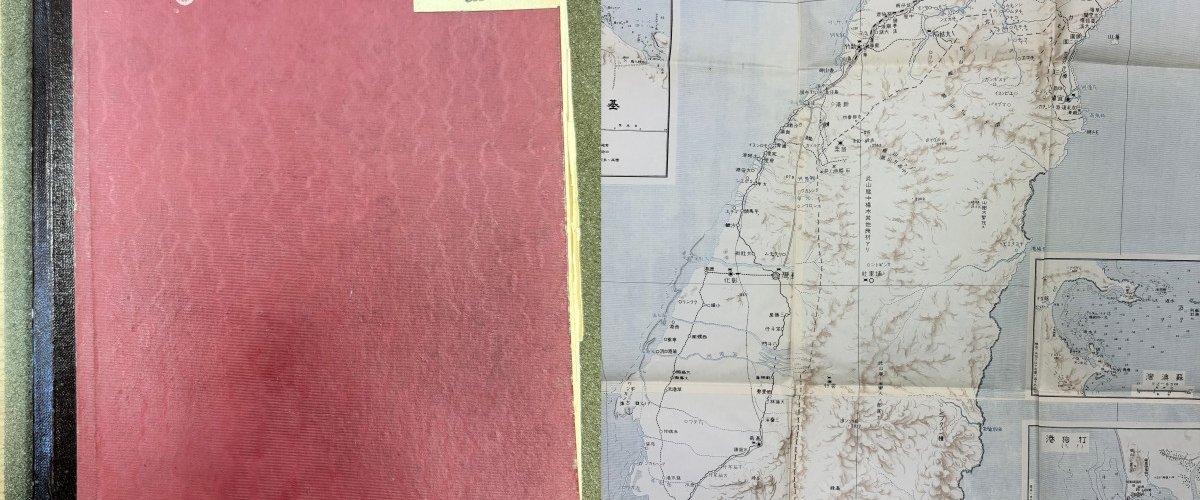Catalogue Updates and Society Events
This week some retrospective cataloguing work has been done to the Reginald Campbell Thompson collection – some of you may recall that the Society acquired his papers through the Griffith Institute, Oxford, in 2024. Since we published the catalogue and an earlier blogpost here introducing his papers, we have been made aware that one of the notebooks in the collection does not indeed belong to Thompson.
The notebook, marked ‘Catalogue of Assyrian letters, etc’ on the cover, stands in contrast in its format to other notebooks within the collection, which document Thompson’s early research interests and trips to Algeria, Egypt, Libya and Iraq. The catalogue includes measurements of over 300 cuneiform clay tablets, on which the Assyrian letters were inscribed, with information pertaining to their inscriptions and the location they were found. With the information that was made available to us and after further research, it has now come to our attention that the clay tablets referred to in the notebook are those discovered at Nimrud, Iraq, in 1952 by the British archaeologist Max Mallowan and his excavation team. The letters, which were royal correspondence of kings Tiglath-Pileser III and Sargon II of Assyria, can be dated to the second half of the 8th century BC. After the excavations conducted by Malowan’s team, some of the letters were published by Henry Saggs, a Fellow of the Society who also took part in the excavations.
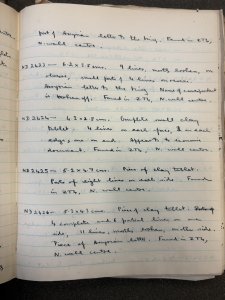
We know that Mallowan worked under Thompson at the archaeological excavation at Nineveh in the early 1930s, but as the Nimrud excavations took place a decade after Thompson’s death, the notebook would not have been in Thompson’s possession. To reflect this new understanding of its provenance, the notebook has now been removed from the collection and re-catalogued as a Special Collections item under SC65. Three other notebooks from the Thompson collection continue to be on display in our Reading Room.
And speaking of Special Collections, several new items (SC66, SC67, SC68 and SC69) have been added to our archive catalogue. Of particular interest is a coloured map of Formosa (Taiwan), with text in Japanese characters including kanjis. What is intriguing to me is that the map was printed in December 1894, only five months before the Japanese invasion of Taiwan. This might explain why the map, in addition to showing the full view of Taiwan, contains several inset maps of major ports across the island, indicating manmade structures of military interest such as barracks, cannons and warehouses, as well as the location of foreign embassies. Although I have not found any information regarding the publisher and how this particular map might have been used, it occurs to me that maps of such nature and level of detail would have been produced by the Japanese authorities and perhaps even assisted military planning. Maps like this, produced at a critical juncture of time in history, can therefore be seen as a reflection of Japan’s growing imperialist interests during the Meiji era.
The catalogue of the map can be viewed here. If you are interested in seeing it or other items belonging to the Special Collections, please get in touch.
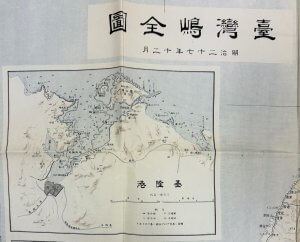
~ ~ ~ ~ ~
In other news, the Society has an exciting line-up of events for April. Our annual Collections Evening is coming up on Thursday 10th April, and will feature three presentations by scholars, each delving into a distinct part of the collection – Dr Alexandra Green and Thaw Zin Latt, from British Museum, will explore the significance of the Society’s collection of Burmese manuscripts, while Dr Annabel Teh Gallop from the British Library will examine the collector’s interest in our Malay and Javanese manuscripts donated by Sir Thomas Stamford Raffles. To round up the evening, Dr Barbara Brend will present new colour images of paintings found in our Persian manuscripts.
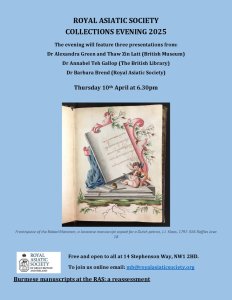
There will also be book launches and lectures throughout the month, addressing a range of topics from England-India connection in the 16th century and Turkish learning in early modern Europe to the Cultural Revolution in the 1960s China. Please visit our Event Calendar for a full listing of our April events.
As usual, all events are free and open to all. If you are unable to join us in person, you are most welcome to register for a place and join via Zoom, and we hope to see many of you there.
James Liu, 28 March 2025.
